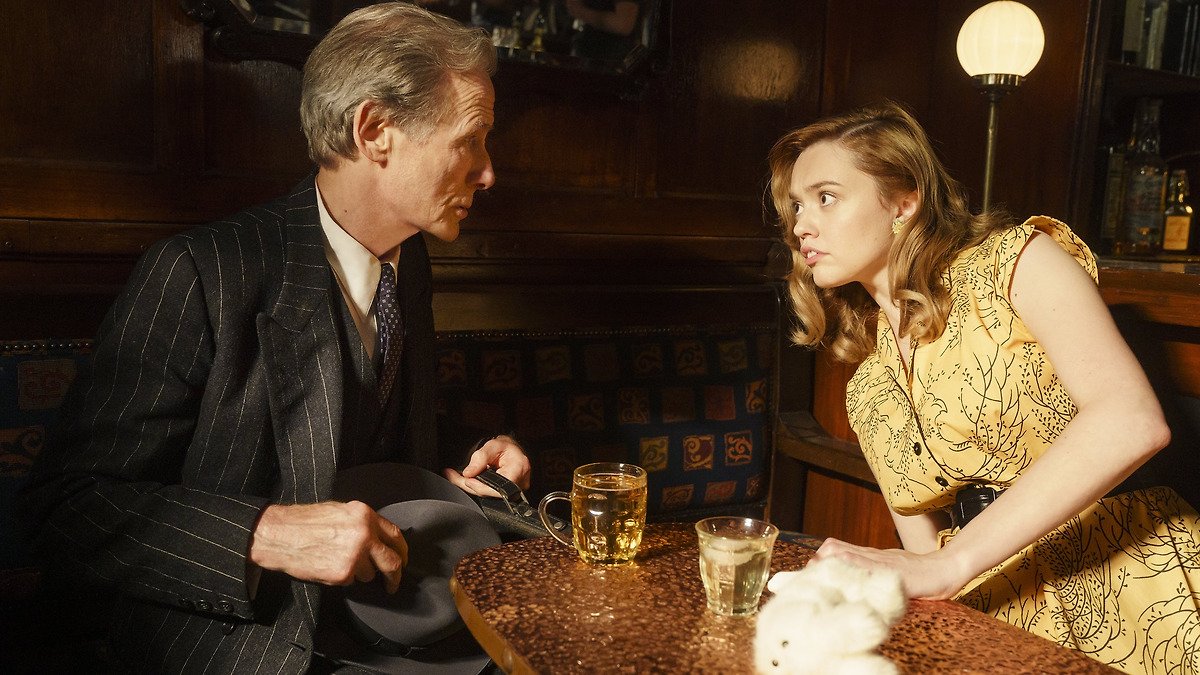Living (2023) Movie Review: Akira Kurosawa is a legendary name in cinema — a Japanese master who took the Western genre and swapped out cowboys for samurais. Seven Samurai (1954) and Ran (1985) are some of his most notable works, setting heroic tales against a sweeping backdrop and intentional cinematography reminiscent of a painting (after all, he was a painter as well as a filmmaker). In 1952, Kurosawa directed the philosophical Tokyo drama Ikiru, which translates to To Live. Remaking any great movie is a challenge enough, let alone from one of the greatest filmmakers of all time! Thankfully, Oliver Hermanus did the original movie a great honor, modernizing the classic with precision and care.
Takashi Shimura’s central performance as a Japanese bureaucrat diagnosed with cancer was particularly praised in Ikiru. Bill Nighy’s British version in 1950s London is similarly poised and nuanced, swaying gently in the snow on a swing set that became the movie’s iconic scene. In fact, the whole film feels like a gentle sway in the snow, proposing that this is what life is all about—the small, still moments immersed in nature and community.
Partially based on the 1886 novella The Death of Ivan Ilyich by Leo Tolstoy, Living follows a frosty, distant old man known as Mr. Williams. He’s on top of the office chair and barely says a word, earning him the nickname Mr. Zombie: “sort of dead, but not dead.” This metaphor doesn’t just apply to his vacant demeanor but the fact he’s got less than a year left to live.
Characters that are motivated to live their life to the full after a cancer diagnosis isn’t a new storyline, but even being a remake and set seven decades ago, Living still feels fresh. The plot is inspiring rather than worn out. Instead of a cheap Hollywood attempt to tug at our heartstrings, Mr. Williams’s diagnosis is used to explore existential themes of death, connection, and purpose. Mr. Williams doesn’t use his final days to climb mountains or visit the tropics (although he does attempt a night out on the town, which doesn’t quite fulfill his desire to make the most of life) but builds a local playground and sings to the piano.
Like Mr. Williams himself, Living starts off a little cold to the touch. However, once he receives his diagnosis, the film’s tone mirrors his gradual flourish into kindness and gratitude towards the beauty found in the everyday. The cinematography by Jamie D. Ramsay echoes that of its 1953 setting, opening to old footage of the suited-up city before framing each scene in a grainy 1.33:1 ratio. This vintage sheen emphasizes the simplicity of life, and the softness of sunbeams and oceanside cafes, calming our souls with poetic images of the countryside and old steam trains.
In the same way that Mr. Williams finds he has no time to be angry anymore, Living leaves its viewers with a newfound sense of tranquility and acceptance. You might find yourself gazing at the leaves of a tree or calling a loved one, which is never a bad way to end a film. Hermanus finds power in all of Earth’s ordinary spectacles in his intimate adaptation that’s simultaneously heart-breaking and heart-lifting. Sex Education (2019) star Aimee Lou Wood also appears alongside Tom Burke and Alex Sharp.




![My Home India [2019]: ‘LIFF’ Review – An Obscure yet Phenomenal Story of Generosity and Compassion](https://79468c92.delivery.rocketcdn.me/wp-content/uploads/2019/06/MHI-768x469.jpg)


![Paava Kadhaigal [2020] Netflix – Sinful Filmmaking under the Garb of Hard-Hitting Social Drama](https://79468c92.delivery.rocketcdn.me/wp-content/uploads/2021/01/4-768x427.jpg)
![The Cordillera of Dreams [2019]: ‘KVIFF’ Review – A Piercingly Elegiac Documentary on Landscape and Memory](https://79468c92.delivery.rocketcdn.me/wp-content/uploads/2019/06/The-Cordillera-of-Dreams-Doc-768x401.jpg)
